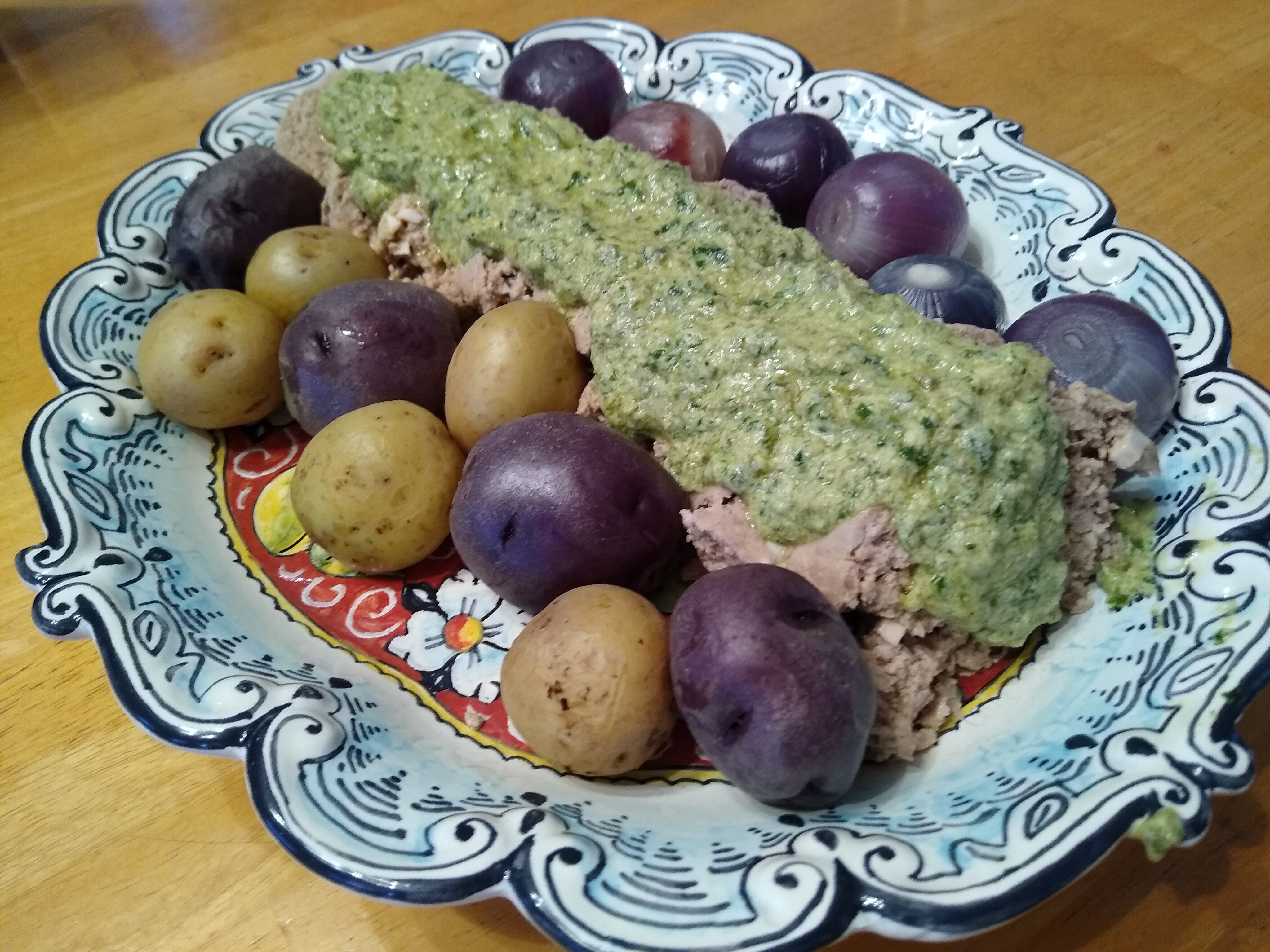
This mild green sauce has a base of chopped hard-cooked eggs, parsley, and olive oil, seasoned with garlic, lemon zest, and capers.
It is used with the "Modena Meatloaf Polpettone alla Modenese. This should not be confused with the Piquant Green Sauce that goes with the Genoese Cappon Magro.

 Here's another classic Sicilian presentation of their beloved swordfish, this one "for the glutton"!
Here's another classic Sicilian presentation of their beloved swordfish, this one "for the glutton"!  This is a simple, homey dish, and a good combination for a ribsticking winter lunch.
This is a simple, homey dish, and a good combination for a ribsticking winter lunch.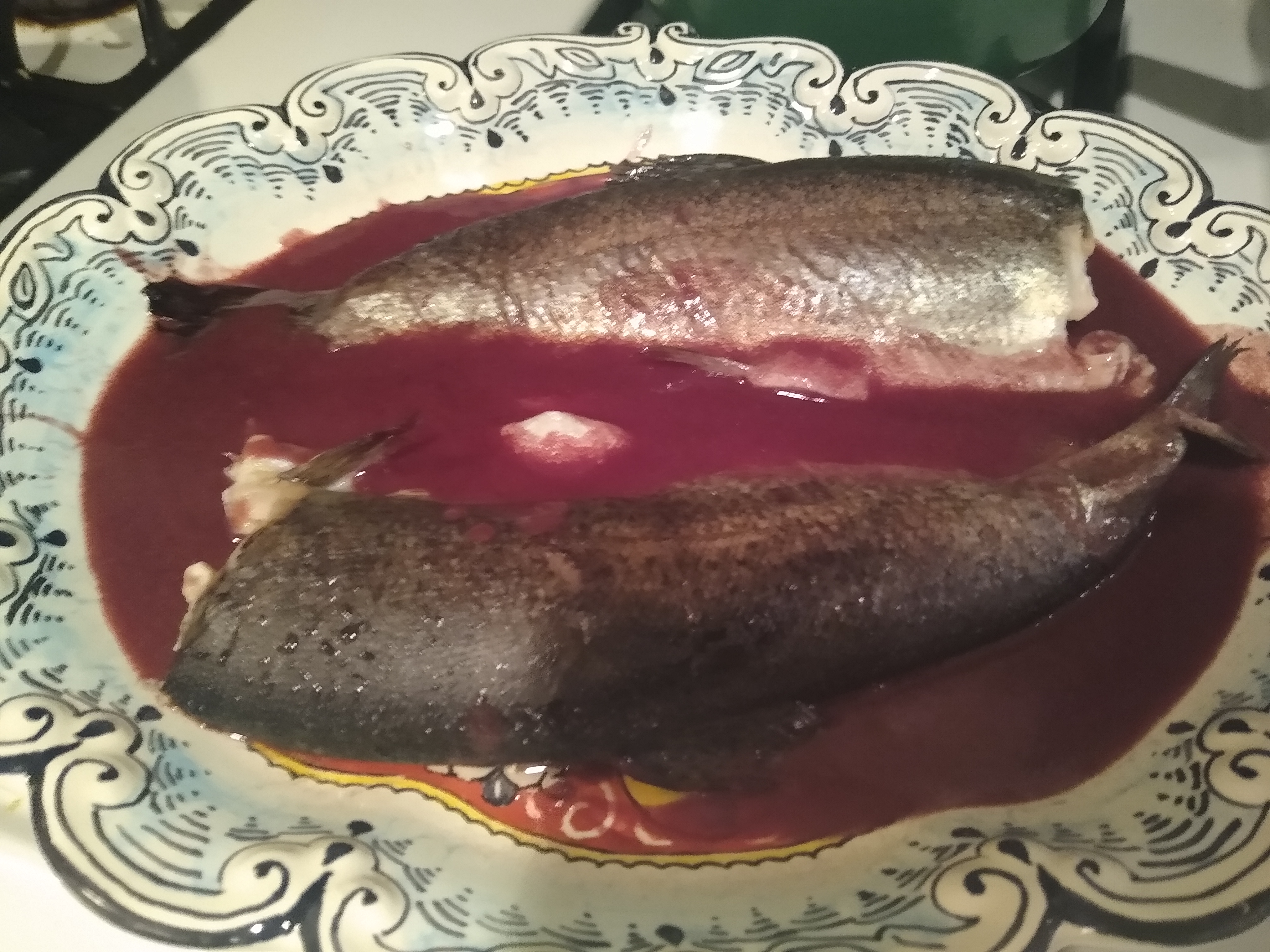
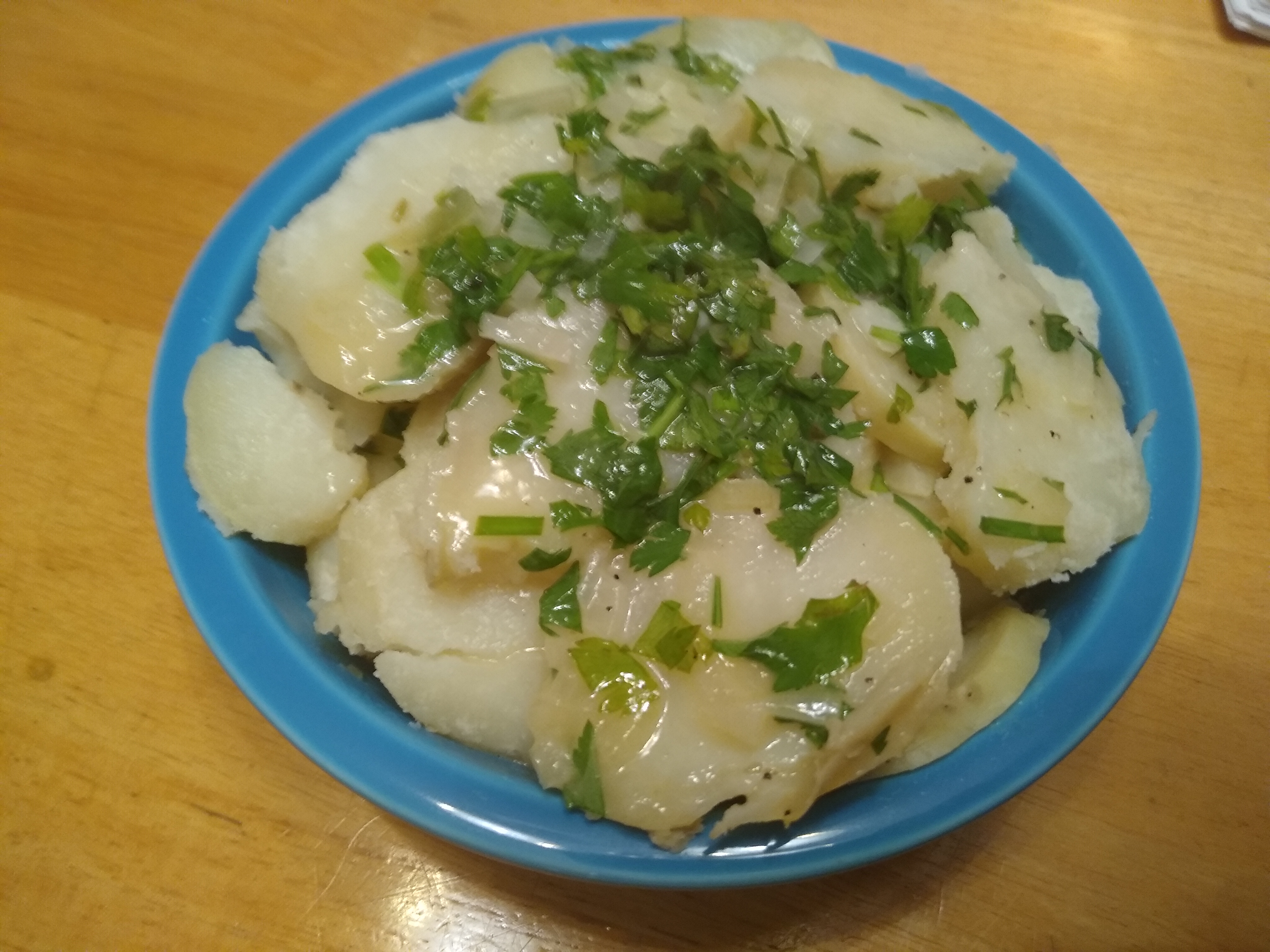 Here's an easy potato dish when you want something lighter than a scalloped potatoes and more interesting than
Here's an easy potato dish when you want something lighter than a scalloped potatoes and more interesting than  This simple and flavorful recipe works with any white fish, including halibut and swordfish. It's great for a weeknight because it's easy, and while it's not as quick as some other recipes, you don't have to hang over the pan the whole time.
This simple and flavorful recipe works with any white fish, including halibut and swordfish. It's great for a weeknight because it's easy, and while it's not as quick as some other recipes, you don't have to hang over the pan the whole time.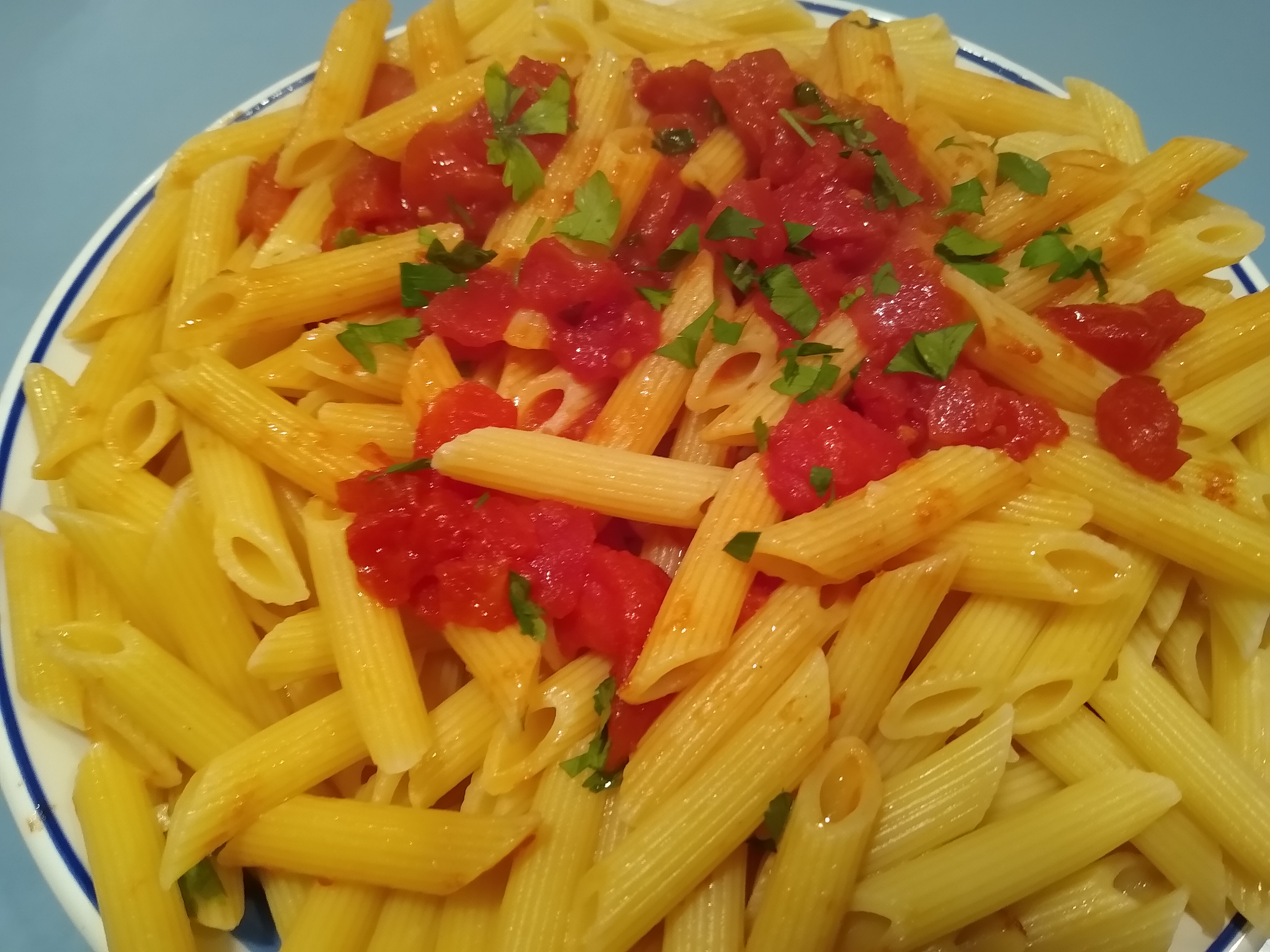 This pasta dish is characterized by the inclusion of a fresh chili pepper in a simple sauce of tomatoes cooked in garlic-scented oil. Arrabbiata is an Italian word for angry; that's the chili pepper. Naturally depending upon your tolerance for angry tomatoes, you can add as much chili pepper as you like. This version is quite mild, with just the taste of the pepper and very little heat.
This pasta dish is characterized by the inclusion of a fresh chili pepper in a simple sauce of tomatoes cooked in garlic-scented oil. Arrabbiata is an Italian word for angry; that's the chili pepper. Naturally depending upon your tolerance for angry tomatoes, you can add as much chili pepper as you like. This version is quite mild, with just the taste of the pepper and very little heat.  This is another of those dishes that you see more often in American restaurants than in Italian ones, but this one is authentically Sicilian, as Marsala wine comes from Marsala town on the western tip of Sicily.
This is another of those dishes that you see more often in American restaurants than in Italian ones, but this one is authentically Sicilian, as Marsala wine comes from Marsala town on the western tip of Sicily.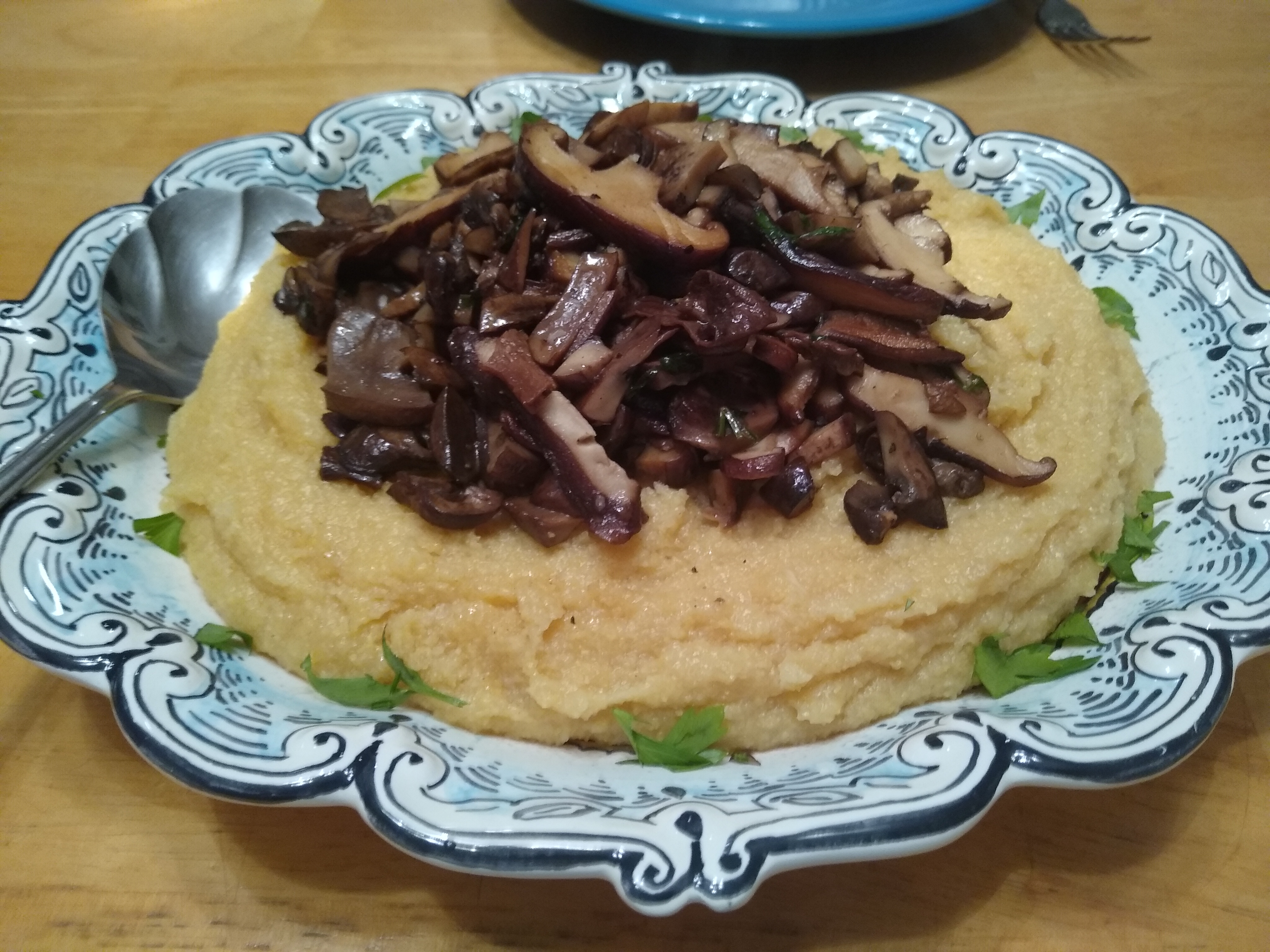 This is a humble classic dish of Piedmont and Valle d'Aosta, in the mountainous northwestern corner of Italy.
This is a humble classic dish of Piedmont and Valle d'Aosta, in the mountainous northwestern corner of Italy.